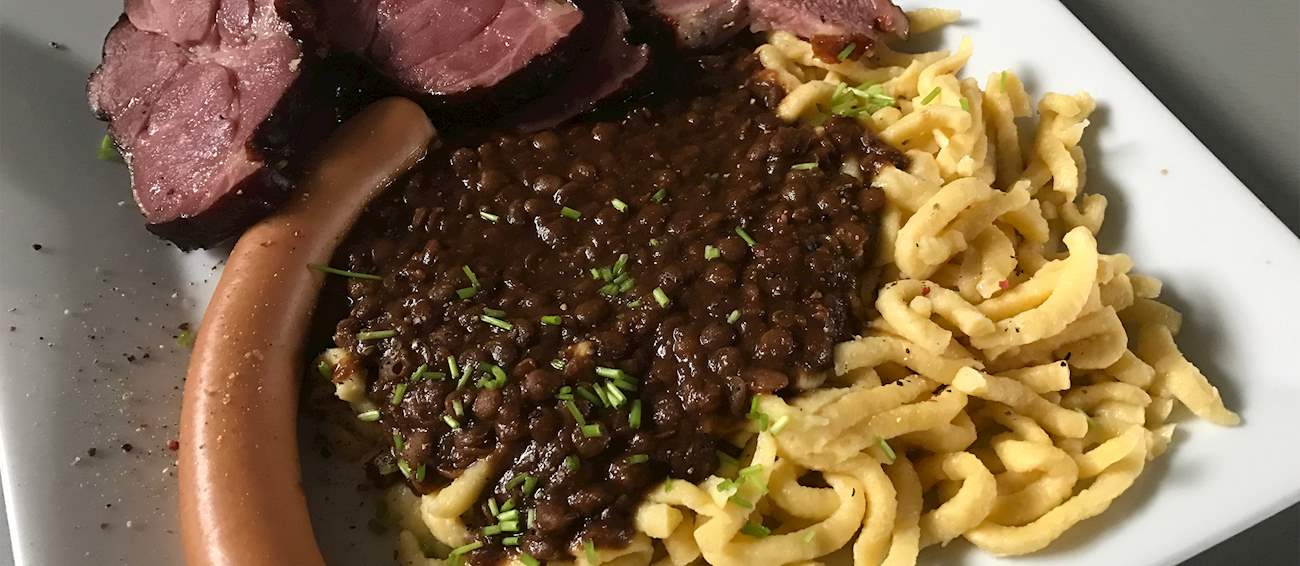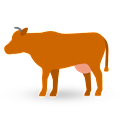Pichelsteiner is a thick German stew made with several kinds of meat and vegetables. Pork, beef, and mutton are the main ingredients alongside potatoes, carrots, cabbage, and leeks. Various other vegetables can be added for extra flavor, such as onions, celery, and garlic.
The stew is seasoned with salt and pepper, then sprinkled with fresh parsley. Pichelsteiner is considered an all-time classic in Bavaria, where the dish originated from in the 19th century. Auguste Winkler, an innkeeper from the small village of Grattersdorf, is credited with inventing the stew at an open-air cooking festival in 1879.
MAIN INGREDIENTS
One of the staples of traditional Swabian cuisine, linsen mit spätzle combines a thick and creamy stew of brown lentils (linsen) with soft egg noodles (spätzle). Lentils are braised with bacon and vegetables and then simmered until soft and fully cooked in meat or vegetable broth, which is usually thickened with roux.
The broth is typically enhanced with tomato paste and seasoned with vinegar, salt, pepper, and nutmeg. Warm and filling, the lentil stew is then transferred to a plate of boiled spätzle noodles, and it is usually enjoyed with a side of saitenwurst sausages (German string sausages) and a cold beer.
MAIN INGREDIENTS
A German specialty originating from Swabia, gaisburger marsch is a meat stew based on beef cooked with a rich meat broth and vegetables. Once ready, the beef is usually cut into bite-sized pieces, accompanied by potatoes, carrots, and spätzle, all drizzled with the broth.
Warm and packed with flavors, the dish is typically topped with roasted onions, parsley, and chives. There are several stories behind the name of this classic dish, which translates as the march of Gaisburg in English. Some say the stew was a favorite among officer candidates who would march to one of the Gaisburg restaurants to have a bowl of it, while other sources credit the wives of certain imprisoned Gaisburg locals for the creation of this stew.
TasteAtlas food rankings are based on the ratings of the TasteAtlas audience, with a series of mechanisms that recognize real users and that ignore bot, nationalist or local patriotic ratings, and give additional value to the ratings of users that the system recognizes as knowledgeable. TasteAtlas Rankings should not be seen as the final global conclusion about food. Their purpose is to promote excellent local foods, instill pride in traditional dishes, and arouse curiosity about dishes you haven’t tried.












